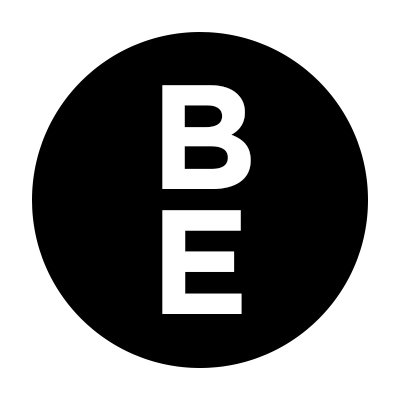An overview of popular UX research methods
Qualitative research can provide unique and powerful insights to help brands and organisations shape anything from new product development, improve service delivery, expand markets or improve their targeting to their audience if they’re looking to improve diversity or expand.
But as you’d expect, there’s not one approach to qualitative research that fits all needs. Having an understanding of what type of research approach is going to provide the best results is as important as recruiting the right type of people to use in your cohort, the structure and moderation of the sessions and then the analysis that happens after the research data has been collected.
For the purposes of this post we’re going to focus on the research methods associated with user experience (UX) research for digital service delivery or brand engagement, be that mobile or web based interaction.
A review of UX research methods commonly
We pulled together a summary of the main types of user experience research that are conducted by research organisations, such as ourselves. This list isn’t exhaustive, but it covers the types most frequently used and should give you somewhere to start if you’re thinking of conducting a research project and need overview of the benefits of each.
A good research project often has a combination of methods deployed to gain a richer data set to analyse and draw any conclusions from. Equally, whilst most research is often conducted at the start of projects, deploying research at later stages of development of a project can provide equally important data and insight, and continues to provide a sense of user involvement in a project that they might be heavily invested in.
User interviews (In-depth interviews)
User interviews are a rich way to discover information that might otherwise be hard to find. In summary, a user interview is a one to one conversation between researcher and user (or potential user) that has an objective and is usual has some form of structure to it.
They can be structured interviews (i.e. a script you follow) or semi-structured (a rough subject plan, that is followed loosely).
They are usually conducted to be generative, to find information that you currently don’t know from the people who are going to be using whatever you’re creating. They are usually used at the early stages of projects. When using as a generative source of data it’s best that they are structured, so that you’re asking the same things from different people. Generating a wider perspective on the things you’re trying to discover, but in a structured format that allows you to compare the data more easily.
You can use interviews in a contextual format too. Best conducted in the usual use environment of the users, to provide the contextual element that can affect behaviour and thinking. For example, you could interview users whilst they complete a series of tasks on a legacy system to discover what aspects they might look to improve or issues they encounter.
Finally, interviews can be conducted on a continuous basis. More than anything this can give users a sense of agency in any development process, and emphases how important user input into the design process is to all stakeholders. But it can also help identify and collect data on anomalies that might occur only on an irregular basis. This approach can produce data of a similar nature to a Diary Study, that is detailed below.
Card sorting
This technique can be great for information categorisation, most importantly, from the contextual point of your users..
When we think of “this subject” or “function”, what else is similar and by what name do we associate it with?
Too often assumptions can be made around this type of behaviour that don’t represent the norm for a specific cohort. With this considered, strategic and representative recruitment (as with all qualitative research) is essential.
This can be particularly helpful when working on Information Architecture planning or navigation design.
What word would you associate with this type of activity or service?
Where would you expect to find this service offer?
Card sorting can also be a good break in other types of qualitative research, if you’re running a Focus Group or have just completed an interview. It can be moderated in an engaging manner, and involve movement and debate.
Field study
This is form of qualitative research is conducted with users in their usual use environment.
Where many UX research methods might happen in mutually convenient spaces for researcher and cohort, or even in the cohort's own space but somewhere other than their desk or usual work space, Field Research happens in a user's default use environment, to ensure variables are as aligned to typical use as possible.
Outside of a UX use, we might use the method of deploying Secret Shoppers to provide a similar type of insight, putting users into the physical space that they typically engage with a brand or organisation and observing or interviewing them about their experience in that environment or space, whilst giving them a task often completed in that space.
Field study work can bring memories of past experiences to the fore, or environmental variables into play that are absent from other forms of qualitative research.
The challenge with Field Study research is that it can be time consuming and also, it can feel more intrusive than other forms of research, so you’ll need buy-in from the cohort. The flip side of this is that “buy-in” also brings a sense of agency and involvement that might not be achieved from other forms of research.
Diary Study
A Diary Study is a documented account from a user of their use of a digital process, platform or task. When a user records their experience of this task, interface or process in a format that can be collated and analysed at a later date.
These provide longitudinal insights that might not be apparent in an in-depth interview or field study, where you’re either asking a user to recount a situation that happened in the past or illustrate how they complete a specific task in the moment. Somethings only become apparent through continued use, over time.
As these are unsupervised, thinking about a framework to simplify completion can help users. Perhaps a script for them to consider on a regular interval or completing a common task. Equally, providing them with simple tools for recording or documenting the study, so that the data gathering isn’t a chore in any way.
Diary Studies either require a degree of foresight to implement ahead of a project commencement, or a project of enough complexity or scale that it’s going to take sometime to implement - i.e. they need a larger time frame to bring real value.
Focus Groups
A rich source of qualitative data, with ability to test ideas and concepts in front of a recruited cohort of representative users (or potential future users). However, they need to be used with caution, as they can lead to creating a data set that is not representative of the actions people may take when operating in isolation. They also need to be moderated well.
Focus groups are good at unearthing ideas or concepts that might not see the light of day when talking to people one on one. Ideas that might seem obvious, or for that matter, obscure, might not be raised by an individual, that might be raised in a group conversation where individuals feel more comfortable in a supportive social dynamic.
They can provide a wider sense of feelings about a concept or idea, that can help create data that might not come from other forms of qualitative activities.
Good moderation of Focus Groups is essential. A good moderator will present concepts and ideas and encourage discussion or exploration, without creating bias. They can encourage participants to explore an idea in greater detail, but should not suggest or indicate that by exploring a particular subject or concept in detail, is in any sense their advocation of a particular idea.
Equally a good moderator will be able to manage more dominant members in a group and ensure that all members of the group are able to participate and express their views, without being dimissed. If a group has been recruited well, all members of the group should have valuable data to share with the moderator.
Groups need to be recruited well to ensure they represent the audience or user groups that you should have identified whilst establishing your research plan, these can be current users or future (prospective) users. This is too often an area of research work that is rushed. Without good planning here, the data gathered can bias the whole outcome and value of the work.
Equally, having a well structured plan and introduction to your Focus Group is an essential piece of good moderation. Tell your group what the objective of the day is, how long it’s likely to take, what you’ll be doing and how you might be recording the session. Ensure that everyone is happy with being recorded, it might be that some are happy to have an audio recording, but might be unhappy with video or photographs being taken. Respect your cohort's wishes and you’ll have a more productive session.
UX research methods in summary
These are just some of the things to consider when contemplating conducting user research, and just some of the things that we can help you to consider and develop in a strategic manner to ensure you get the most out of any investment in user research.
As with all research, the value of insight that can be gained can be integral to the direction a well conducted project can take. We have conducted many research projects when a client has gone into the work with a particular view, only to come out the other side with a completely new direction or view to take under consideration.
Tools such as software can help with the implementation, recording and analysis of research data, but nothing that will be more valuable than a clear research objective, plan and good moderation.
Need some help to do this?
We’re always happy to help people to get started with this type of work. Whether you’re startup finding your feet or a growing brand wanting to define your audience with greater clarity.
We’ve got a number of ways to help, check out the below to see just some of the ways we can.

